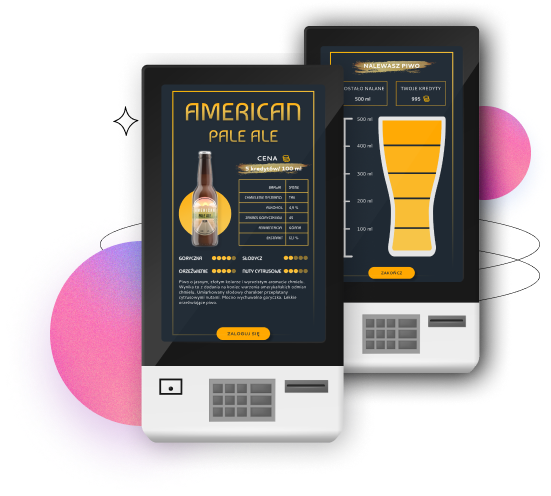

Beer dispenser
A beer dispenser is a comprehensive self-pouring beer device. In addition to increasing customer satisfaction, it also measures beer flow, generates beer statistics that can lead to sales optimization. This gadget will revolutionize the way beer is sold. An innovation for customers and an aid to bar management.
Rapid Development Process in use: Case study of Jumpilot
How does Rapid Development Process work in practice? This was the latest challenge for our client – and for us as well. Follow this article to learn how we contributed to building Jumpilot – an innovative IoT solution.
STEP 1
Problem definition and market research
Our client reached out to us to solve a common problem of amusement parks. They’ve noticed that most of guests visit the park only once, even though they enjoyed the overall experience. They wanted to develop a solution which could keep visitors more engaged, entertained and loyal.
By this, guests were supposed to use park’s facilities longer and more frequently. Of course, Jumpilot was designed also to increase the profitability and to support the park in gaining a great competitive advantage.
STEP 2
Service Outline
The task was quite challenging. We needed to prepare a tool which would be:
-
appealing for children, in both technology and design
-
easily controlled by the staff
-
safe for kids and adjusted to their typical behaviour
-
technically manageable
-
in the budget, which was obviously quite limited in the case of a startup
Developing the device which is able to monitor the individual results and to organize competitions for users was a chance to make the whole jumping experience more fun and engaging.
STEP 3
Product mockups and testing
Our challenge was to build a device not constraining the moves of children. Also, the solution needed to allow many data transmitters to work simultaneously, in real time, and stay resistant to actions like deleting duplicates or resetting the device.
So, as the next step of our Rapid Development Process, we started to test various ideas and technologies design the solution. Our development team prepared the first mockups to test kep assumptions with both users and customers. Based on this, we could prove that our ideas were right and move on to the proper project development.
STEP 4
Software architecture
Right after starting the proper development process, we first has to create an engine to run and control basic functionalities of the game. In addition, we needed to build a functional interface able to adjust to various screen sizes.
However, it was still not the end. Once we produced backend and frontend layers, we still needed to synchronize them so that all the data collected from visitors could be processed and displayed on the target devices in real time. With the help of our most experienced developers, we created another layer allowing the communication between backend and frontend. Eventually, we managed to build the solution which smoothly reacts to all events happening in the game in real time, without delays.
To build Jumpilot, we implemented software solutions dedicated to IoT, big data and real time messaging applications. We used programming languages such as Java, C, Python and Java Script. This tech stack gives us the best results in terms of stability and cost efficiency.
The special solution used in this project was Apache Kafka – a message broker. This is the tool which allows the system to collect data from sensors in real time. Thanks to MQTT, a transport protocol integrated with Apache Kafka, the solution is able to collect big amounts of data. Park administrators can review the data via ELK stack (Elasticsearch, Logstash, Kibana) and generate functional dashboards including number of users per day, comparison of activities, weekly summaries, and many others.
STEP 5
Proof of concept
The solution was first installed in the first amusement park located in Sweden. Jumpilot managed to successfully increase both frequency of visits and profits. According to the data provided by the client, thanks to our solution now 97% of children declare the wish to revisit the park, and 64% stay there longer than before (on average).
The results were simply spectacular and corresponded with founders’ expectations. This helped them to start their expansion and quickly move on to the next step of Rapid Development process.
STEP 6
Scaling
Thanks to our Rapid Development strategy based on adapting already existing frameworks such as Kafka, MQTT, Elasticsearch or React.js, the client could immediately start scaling their solution. They successfully installed Jumpilot in the first park after only 4 months from the kick off sessions. Now the startup can focus on getting more funds for product development, acquiring more clients and implementing the solution in the next parks located in Sweden and Poland.
Our cooperation with Jumpilot proved that a functional MVP can be prepared in an extremely short time and that clients can be attracted even in a very first stage of development. To read more about customer acquisition, go to our article about building traction for a startup.
To learn more about software development for startups and our Rapid Development aproach, feel free to contact us. We will be happy to assist you on your project and provide you with functional, innovative and fully customized technology solutions.